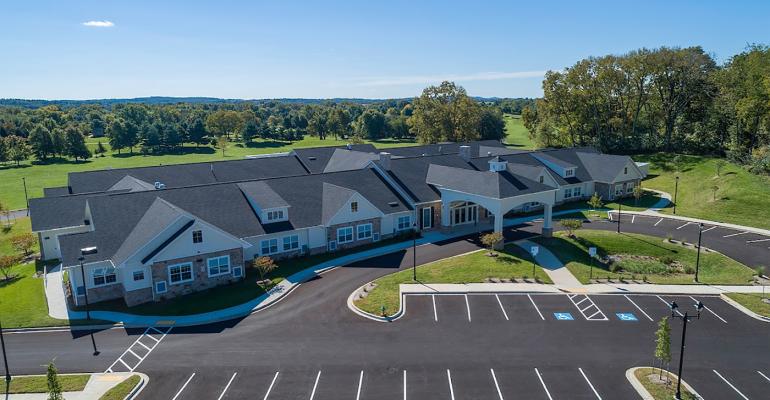Demand is high and rising for memory care—a kind of seniors housing specially designed to help people who live with dementia. The number of people who need the intensive services provided at memory care units is growing as the number of elderly people in the U.S. continues to rise overall.
Both freestanding memory care properties and properties that combine both memory care and other kinds of seniors housing have recovered from the doldrums of COVID, driving occupancy rates up after hitting lows during the pandemic.
“Demand for memory care units within assisted living buildings has fully recovered,” says Beth Mace, chief economist for the National Investment Center for Seniors Housing, based in Annapolis, Md.
Developers have taken notice. It is increasingly rare for developers to build new assisted living facilities without including a wing or a floor of memory care seniors housing, Mace says.
At the same time, Silverado, a leading owner and operator of freestanding memory care communities, is once again developing new properties and expanding into two new states.
Silverado builds again
In March 2022, new residents began to move in at the new Silverado Red Rock Memory Care Community, which includes 72 new, freestanding memory care units in Las Vegas. Silverado is also developing another 72 memory care units in Frederick, Md., in a project slated to open before the end of the year. These two additions will increase the number of states Silverado operates communities in from six to eight, with Nevada and Maryland joining California, Texas, Washington, Illinois, Wisconsin and Virginia.
“Expanding into two states in a matter of months is a truly special occurrence,” says Loren Shook, president, chairman, and co-founder of Silverado.
Development boom interrupted by COVID
Before the coronavirus, developers had rapidly increased the number of memory care beds—a development boom that ground to a halt during the pandemic.
Over the five years before the pandemic, developers increased the inventory of memory care by nearly 46 percent in the 99 primary and secondary markets tracked by NIC. In comparison, over the same five-year period ending in the first quarter of 2020, developers increased the inventory of independent living and assisted living seniors housing by just 10.8 percent and 17.8 percent, respectively.
Developers continued to create new memory care beds. Since the pandemic, they grew the inventory by another 9.4 percent in the top 99 markets tracked by NIC. That’s more than the inventory of both the independent living and assisted living which grew by just 4.8 percent over the same period
The interruption was even more pronounced for developers of freestanding memory care. Developers have finished just seven freestanding memory care properties during the pandemic, compared to the 175 they finished of the five years ending before the pandemic started in the first quarter of 2020.
During the pandemic, the percentage of memory care beds that were occupied dropped to a low of 72.7 percent in the second quarter of 2021 in NIC’s top 99 markets, down from a high of 84.1 percent in the fourth quarter of 2021. The occupancy rate is had recovered to 79.4 percent in third quarter of 2022.
“The slowdown in inventory growth of those properties has allowed the occupancy rate to improve,” says Mace.
At combined properties, which include both memory care and other types of seniors housing, the percentage of occupied beds was 80.5 percent in third quarter of 2022.
“The occupied unit count of freestanding memory care is just shy of its all-time high and the occupied unit count of combined is a little above,” says Mace. She expects the need for memory care properties to continue to increase as the number of elderly Americans grows in the coming years.
Developers have been eager to create more memory care seniors housing, but rising interest rates and a shortage of qualified staff has held many back.
“There has been a significant slowdown in debt capital with the increases in interest rates from the Federal Reserve,” says Mace. “That has affected the ability to transact.”

